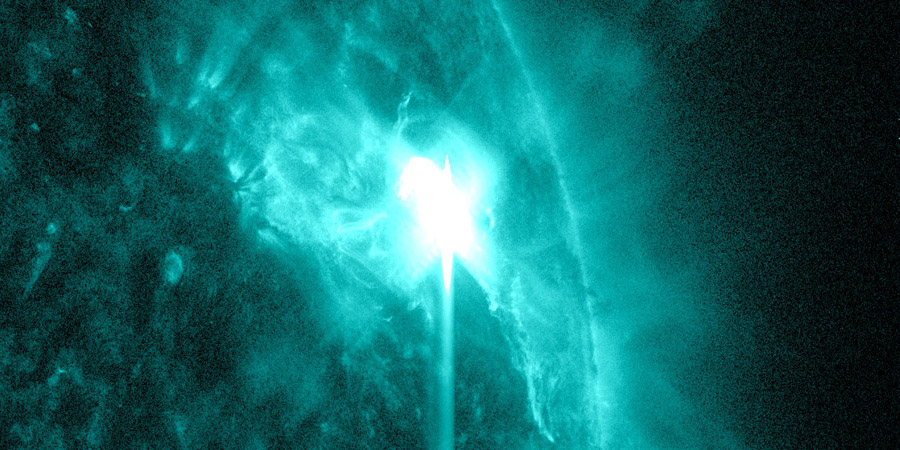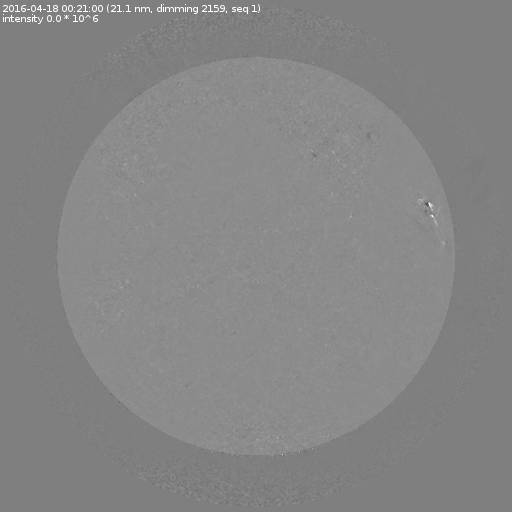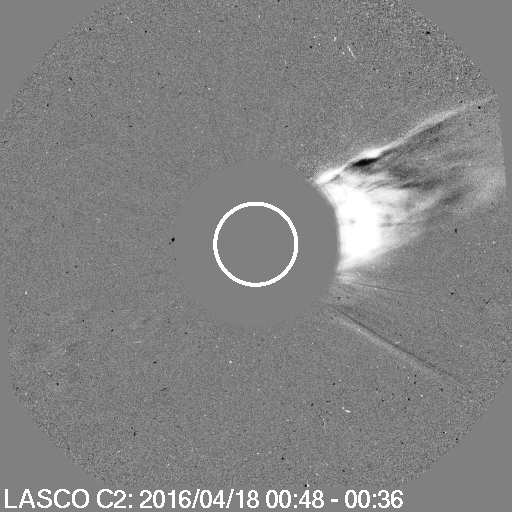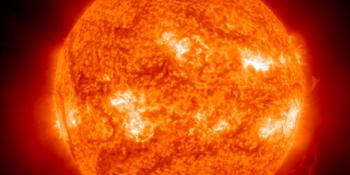M6.7 solar flare
Monday, 18 April 2016 01:43 UTC

After almost silently transiting the Earth-facing solar disk it didn't look like sunspot region 2529 had the capacity to let loose a strong solar flare. Today at 00:29 UTC it showed that it was a deceiving silence as it found the energy to produce the strongest solar flare of 2016 thus far: M6.72.
Strong M6.72 solar #flare - Follow live on https://t.co/T1Jkf6i4Cb pic.twitter.com/cqg1cH1DjD
— SpaceWeatherLive (@_SpaceWeather_) 18 april 2016
It was an eruptive event as both Type II and IV radio sweeps were reported by the SWPC and the beginning of coronal mass ejection is visible on the latest SOHO/LASCO coronagraph imagery. We do have to note that sunspot region 2529 is now close to the west limb so this coronal mass ejection will likely (mostly) miss Earth but we of course await more coronagraph imagery in the hours ahead to judge the exact trajactory of this plasma cloud. It is still too early to confirm if there might be an earth-directed component.
ALERT: Type II Radio Emission Begin Time: 2016 Apr 18 0030 UTC Estimated Velocity: 1869 km/s
ALERT: Type IV Radio Emission Begin Time: 2016 Apr 18 0034 UTC
SUMMARY: 10cm Radio Burst Begin Time: 2016 Apr 18 0023 UTC Maximum Time: 2016 Apr 18 0024 UTC End Time: 2016 Apr 18 0024 UTC Duration: 1 minutes Peak Flux: 120 sfu Latest Penticton Noon Flux: 102 sfu

Animation: the eruptive M6.7 solar flare. SDO/NASA/SIDC/ROB.

Image: The beginning of a bright coronal mass ejection is now visible on SOHO/LASCO C2.
A solar radiation storm of the minor S1 class could develop in the hours ahead due to the eruptive nature of this event near the west limb. Minor impacts on HF radio at arctic latitudes will be possible. More news on the coronal mass ejection later today when more LASCO images are available.
Thank you for reading this article! Did you have any trouble with the technical terms used in this article? Our help section is the place to be where you can find in-depth articles, a FAQ and a list with common abbreviations. Still puzzled? Just post on our forum where we will help you the best we can!
Latest news
Latest forum messages
Support SpaceWeatherLive.com!
A lot of people come to SpaceWeatherLive to follow the Sun's activity or if there is aurora to be seen, but with more traffic comes higher server costs. Consider a donation if you enjoy SpaceWeatherLive so we can keep the website online!

Space weather facts
| Last X-flare | 2025/01/04 | X1.85 |
| Last M-flare | 2025/01/09 | M1.1 |
| Last geomagnetic storm | 2025/01/04 | Kp5 (G1) |
| Spotless days | |
|---|---|
| Last spotless day | 2022/06/08 |
| Monthly mean Sunspot Number | |
|---|---|
| December 2024 | 154.5 +2 |
| January 2025 | 144.5 -10 |
| Last 30 days | 153.5 +36.1 |


